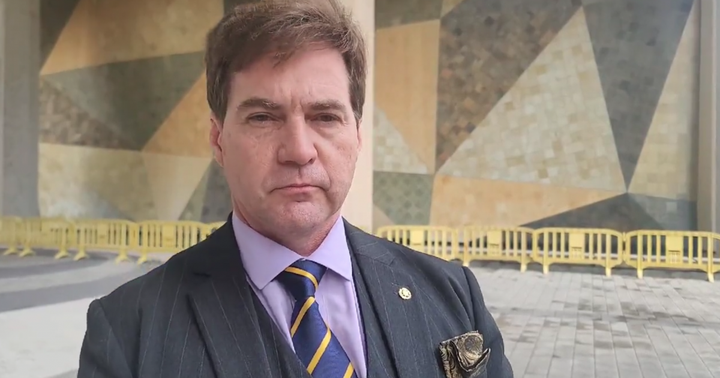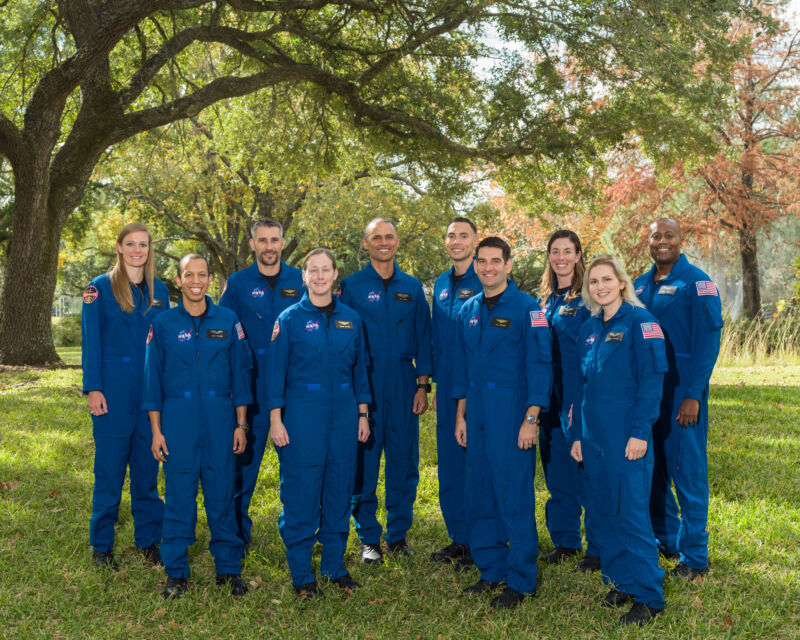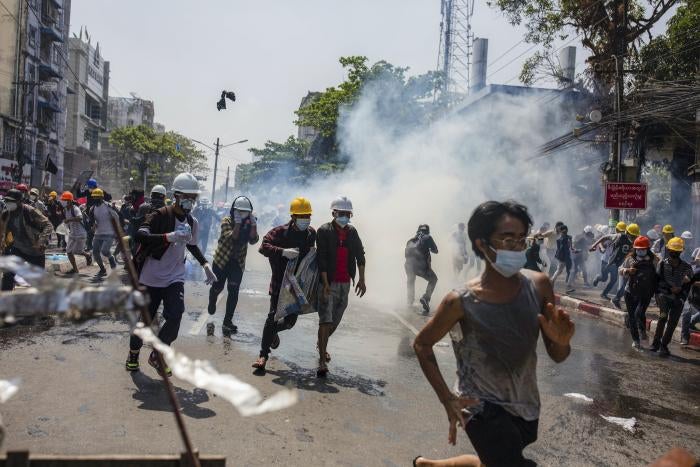by Makkie Maclang
December 6, 2021

It took the jury in the Kleiman v Wright trial almost two weeks of deliberation to reach a unanimous decision. The good news is that the verdict is finally out, and the jury has sided with the defense on all counts except conversion, awarding $100 million to W&K Info Defense Research, LLC. No punitive damages have been given to the plaintiff, the Dave Kleiman estate.
This is a loss to the plaintiff, but it is only fitting as no direct evidence to their claims have been presented during the trial. Now, there is no more question that Satoshi Nakamoto, the pseudonymous creator of Bitcoin, is 100% Craig Wright and no one else.
The Kleiman v Wright trial has concluded its closing arguments before Thanksgiving, and the jury has deliberated since then, excluding the holidays. Considering that the plaintiff has revised its demands and is requesting at least $126 billion, which is half of the $252 billion intellectual property of nChain Chief Scientist Craig S. Wright, plus punitive damages of about $34 billion, it would truly be difficult for any jury to reach a verdict in this unprecedented Bitcoin trial.
Facts of the Case
The plaintiff is composed of the David Kleiman estate and W&K Info Defense Research, LLC, and is represented by Ira Kleiman, David Kleiman’s estranged brother and his only living immediate family member. Ira Kleiman claimed through this lawsuit that Wright cheated David Kleiman out of the credit of being a partner in writing the Bitcoin white paper under the pseudonym Satoshi Nakamoto.
The plaintiff also alleged David Kleiman was a business partner in W&K Info Defense Research, LLC, through which the early mining of 1.1 million Bitcoin, now priced at about $64 billion, was purportedly done.
Thus, the plaintiff originally claimed that David Kleiman’s estate is entitled to half of the Satoshi coins, which was later on changed to half of the value of Wright’s intellectual property as Bitcoin creator Satoshi Nakamoto.
Throughout the three-week trial, it was clear that the plaintiff only had circumstantial and anecdotal evidence as to the alleged partnership between David Kleiman and Wright as Satoshi Nakamoto and business partnership between the two in mining the 1.1 million Satoshi coins.
It was a fact proven in court that there was no evidence of a written agreement between David Kleiman and Wright in being partners as it relates to co-authoring the Bitcoin white paper and mining the said coins.
And because Ira Kleiman had previously deleted and overwritten all of David Kleiman’s hard drives, given away his brother’s cellphone and reformatted David Kleiman’s laptop so Ira Kleiman’s wife could use it, no evidence from David Kleiman could be presented in court, aside from emails that were alleged to be forged by the plaintiff.
It was also a fact that almost all evidence presented by the plaintiff came from Wright himself after he contacted Ira Kleiman, the brother of someone Wright considers to be his best friend. In these email exchanges and even in a BBC interview outtake that has been documented, Wright called David Kleiman his partner and as essential to the creation of Bitcoin.
In his testimony, Wright told the court he exaggerated David Kleiman’s role in Bitcoin because he wanted his best friend to be remembered. In fact, according to Wright, David Kleiman only edited the Bitcoin white paper and his crucial role was in providing the encouragement and moral support that Wright needed in order to push through with creating Bitcoin.
There was no evidence presented in court to substantiate Wright’s claim of exaggeration; however, it’s a fact that David Kleiman died in 2013 without making a single attempt to get credit for being a part of the pseudonym Satoshi Nakamoto and without laying claim to the 1.1 million Satoshi coins that Ira claimed his brother David Kleiman mined with Wright.
Questions Left Unanswered
David Kleiman was a computer forensics expert, a former police officer, and was an awarded U.S. army veteran. It has also been established during the trial that David Kleiman knew how to create a signed operating agreement, which he had done with his business partners who were also his best friends.
Why did David Kleiman not have Wright sign an operating agreement while they were allegedly creating and mining Bitcoin? Why did he not file a civil or criminal complaint if Wright fraudulently took hold of assets that were rightfully his? Why did David Kleiman remain on good terms until he died with Wright—someone who allegedly cheated him of a fortune?
David Kleiman died due to complications from several illnesses, but largely in part due to a MRSA infection for which he was hospitalized for the last two years and five months of his life. He was a paraplegic who was also destitute as evidenced by his financial status dissected in court—David Kleiman was in a mountain of debt and could not even afford to pay for his cell phone bill at the time of his death.
Why did David Kleiman not sell off his alleged Bitcoin holdings to alleviate his financial situation or even improve his quality of life by being able to afford better medical care? Even if David Kleiman and Wright were operating in secrecy, as alleged by the plaintiff, why did David Kleiman not even try to lay claim to the Satoshi coins and ask Wright for help considering the dire situation he was in where his life was literally on the line?
David Kleiman knew that he was dying. Less than a month before his death, the value of 1.1 million Bitcoin was already almost $300 million. Many were also already trading Bitcoin at this time. Still, David Kleiman did not do anything nor tell anybody about this alleged partnership in creating and mining Bitcoin. Why?
The plaintiff continued to allege that David Kleiman and Wright were operating in secrecy and that it was the main reason why there were no written agreements or why David Kleiman never mentioned Bitcoin to any of his friends. However, Wright had told his family and friends, and even advised them to buy or mine Bitcoin, as what he also told David Kleiman. Why did David Kleiman not do the same to his family and friends?
David Kleiman’s inaction while he was still alive has left many questions unanswered, or it could also have spoken volumes about the truth, which was what probably resonated more with the jury.
As established in court, David Kleiman was a good guy who many considered as their best friend. It is now obvious that David Kleiman remained a good guy until the end—not laying claim to something that was not rightfully his. Sadly, the same could not be said of Ira Kleiman.
Although it took some time, the jury answered “no” in favor of the defense in 24 of the 25 questions in the verdict form. The only answer in favor of the plaintiff was, “Do you find that Craig Wright is liable to the Estate of David Kleiman and/or W&K Info Defense Research, LLC for conversion?” And the jury answered “yes” only to W&K Info Defense Research, LLC and awarded it $100 million—chump change compared to the $160 billion the plaintiff asked for.
In general, the jury finds Wright not guilty against allegations of breach of partnership, civil theft, fraud, constructive fraud, breach of fiduciary duty and unjust enrichment. The verdict marks a big win for Wright and a clear validation that he alone was behind the pseudonymous Bitcoin white paper author Satoshi Nakamoto.
The jury has spoken very clearly: David Kleiman was not a partner of Wright in writing the Bitcoin white paper as Satoshi Nakamoto and his estate is not entitled to half of the 1.1 million Satoshi coins; Wright did not steal anything from David Kleiman; and Wright did not commit any fraudulent act as it relates to David Kleiman’s estate.
“The decision reached by the jury today reinforces what we already knew to be the truth: Dr. Craig Wright is Satoshi Nakamoto, the sole creator of Bitcoin on blockchain technology. And Craig Wright did not form a partnership with David Kleiman to mine Bitcoin. Thankfully, the jury recognized the overwhelming evidence that Dr. Wright holds 3,208 patents related to Bitcoin and blockchain technology, he has written extensively about Bitcoin and its underlying code, and has restored the original Bitcoin protocol in Bitcoin Satoshi Vision (BSV),” Andres Rivero, lead counsel for the defense, said in a statement.
Although it is a clear win for Wright and the defense, the plaintiff can still appeal the case or reach a settlement behind closed doors.
What now?
It must be noted that although W&K Info Defense Research, LLC has been awarded $100 million by the jury, that there is still a probate case in Palm Beach County court that will decide whether or not Ira Kleiman gets a piece of the $100 million.
This is because Lynn Wright, Craig Wright’s ex-wife and the fiduciary controller of W&K Info Defense Research, LLC, has filed a lawsuit against Ira Kleiman claiming that he does not have the authority to represent and act on behalf of W&K Info Defense Research, LLC to sue Craig Wright.
Holding undeniable proof of her shares in W&K Info Defense Research, LLC, Lynn Wright’s lawyers argue that based on the Chapter 605 of the Florida Statutes. According to the section on limited liability companies, a transfer of shares to a non-member does not mean the non-member would also have management rights to the company.
In the case of W&K Info Defense Research, LLC, even if David Kleiman’s shares were transferred to Ira Kleiman after the former’s death, it does not give Ira Kleiman the right to manage or participate in the company’s affairs—or even represent the company in a lawsuit.
While the future is dim for Ira Kleiman and his team of litigators, this is clearly a momentous occasion for Wright and BSV. On top of Wright’s claims of being Satoshi Nakamoto being proven as true, interest in BSV is expected to grow rapidly, with it being validated as the original Bitcoin with Wright at the helm. This is evidenced by the fact that the price of BSV jumped from $118 to $136 in a matter of minutes.
“Now that this case confirmed the origins of Bitcoin’s creation, Dr. Wright plans to make good on his promise to empower marginalized groups through the greatest financial equalizer of the modern era. Bitcoin Satoshi Vision will allow people to steadily become part of the global capitalist world, start selling, trading, building themselves—not because they have to take handouts from the government but because they can work with dignity for themselves. Dr. Wright plans to make Bitcoin Satoshi Vision something that is sustaining and sustainable that lasts,” Rivero stated.
Wright has been largely criticized for his claim of being Satoshi Nakamoto by the BTC camp—even having a popular moniker as “Faketoshi.” The big question now is what will happen to BTC now that it has been proven through the verdict that Wright is indeed Satoshi Nakamoto?
At the time of writing this article, the price of BTC has dipped to $49,206.40. And this is low, especially compared to its all-time high of $68,521 on November 5 at the start of the Kleiman v Wright trial. Will the downward spiral continue? Only time will tell.













